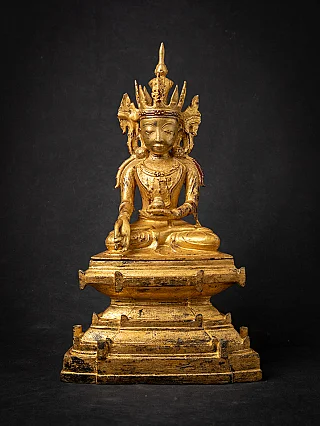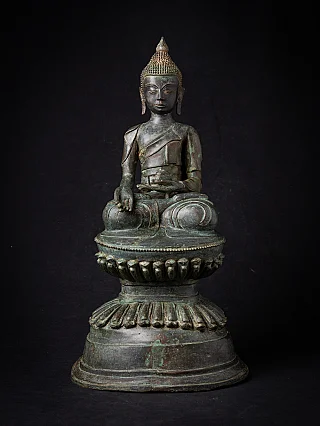Varada Mudra

The Varada Mudra, often called the "favorable mudra," is a profound gesture in Buddhist and Hindu iconography. It symbolizes offerings, charity, compassion, and sincerity. This hand gesture is rich in spiritual significance and is frequently depicted in various Buddhist statues and artworks across Asia.
What is the Varada Mudra?

The Varada Mudra is a symbolic hand position representing giving or granting blessings. It embodies the ideals of generosity, compassion, and selfless offering to others. The mudra is typically performed with the left hand, while the right hand may be engaged in another mudra, such as the Abhaya Mudra (the gesture of fearlessness).
Key Characteristics of the Varada Mudra
- Hand Position: The Varada Mudra is characterized by the left hand being held downward, often with the palm facing outward. The fingers can be upright or slightly bent, depending on the artistic style and regional interpretation.
- Arm Position: The arm may be bent with the palm facing upward or extended downward with the palm presented outward. This flexibility in positioning allows the mudra to be adapted to various artistic and symbolic contexts.
Historical and Regional Variations
- In India: The Varada Mudra is prominently featured in images of Avalokitesvara from the Gupta Period (4th to 5th centuries). Avalokitesvara, known as the Bodhisattva of Compassion, is often depicted with this mudra to emphasize his role as a benevolent and compassionate figure.
- In China and Japan: During the Wei and Asuka periods, the Varada Mudra's representation evolved. Initially, the fingers were depicted as stiff, gradually becoming more relaxed. By the Tang Dynasty, the fingers were naturally curved, reflecting a more fluid and graceful interpretation of the mudra.
The Varada Mudra is sometimes confused with the Vitarka Mudra, which also involves hand gestures that convey teachings and discussions. However, the Varada Mudra focuses explicitly on giving and compassion, distinguishing it from the Vitarka Mudra's emphasis on transmitting knowledge.
Significance in Buddha Statues
The Varada Mudra is extensively used in Buddha statues and Southeast Asian images. In these statues, the mudra often complements other hand gestures, such as the Abhaya Mudra, to represent various aspects of Buddhist teachings harmoniously. Including the Varada Mudra in Buddha statues is a visual reminder of the virtues of generosity and compassion central to Buddhist practice.
Exploring More About Buddha Statues and Mudras
Consider exploring additional resources and collections of Buddhist art to delve deeper into the significance and variations of the Varada Mudra and explore its presence in Buddha statues across different cultures. Understanding the Varada Mudra enhances appreciation for Buddhist iconography and enriches one's spiritual and artistic knowledge.
Share this page




































-small_webp.webp)
